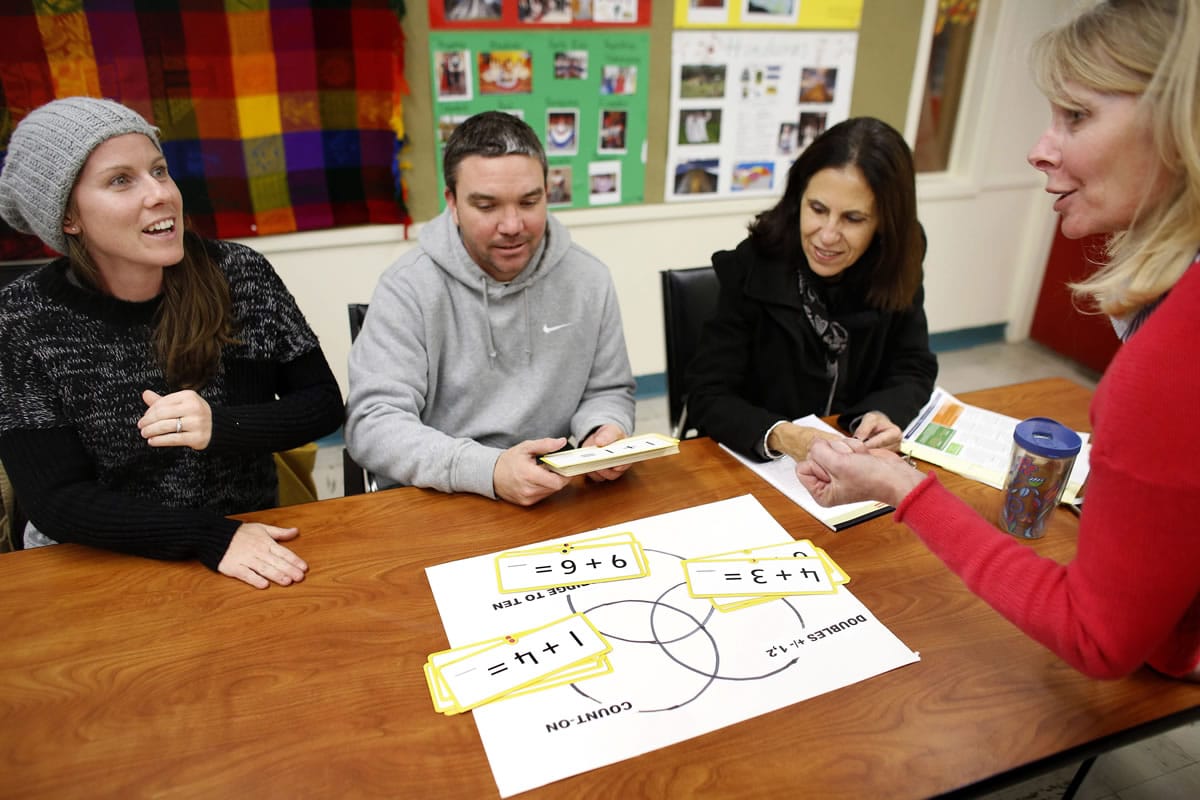WESTERLY, R.I. — Any adult who has tried to help a second-grader with homework has noticed math is not what it used to be. Now schools are unlocking the secrets of Common Core math for mystified parents.
They’re holding special classes or giving out materials designed for adults so they can help children with their math homework. After parents learn the strategies, educators say, they’re more willing to get on board with Common Core math amid criticism from some politicians, from fellow parents, on social media and from celebrities like Louis C.K., who complained Common Core math made his daughters cry.
Nearly all states are using Common Core learning standards, which dictate what students should know in math and English.
In Westerly, teachers and administrators gathered recently in a classroom full of adults eager to learn. It was part of a free three-part series called “Parents Can Help With Math,” run by the Westerly Parent Academy.
Matt and Kate Ezyk are perplexed by Common Core math and have seen Kate’s sister struggle to help her daughter with homework. As parents of a kindergartner, they worried they weren’t equipped to help him when he starts bringing assignments home.
“If this doesn’t make sense to us, how are we going to help him?” Matt Ezyk said.
During the 90-minute session, educators demonstrated different ways to solve basic math problems.
“How would you add these two single-digit numbers?” asked one, as she writes 7+6 on a whiteboard.
The teachers went on to explain ways to get to the answer: “doubles,” “count on” and “bridge to 10.”
In doubles, the student finds the closest double and works from there. So, 7+6 becomes 6+6 = 12+1 = 13.
In bridge to 10, students break one of the other numbers up to form a combination that makes 10. In 7+6, break up the 6 to make 3+3. Then, 7+3 = 10. 10+3 = 13.
In count on, the student finds the largest number and adds to it, one by one. In 7+6, the student might count on 7, 8, 9, and reach 10. Add the remaining 3 to get 13.
Parents were then put into groups to do an exercise children might do in the classroom — go through flash cards with different formulas and choose how to solve them: “doubles,” “count on” or “bridge to 10.”
Children will eventually learn traditional algorithms, the educators explained, but will have a solid foundation in understanding what numbers mean and being able to justify their thinking.
“We want to develop flexible thinking, so if they hit a roadblock, they have multiple places they can go,” said Polly Gillie, principal of Dunn’s Corners Elementary School. “It all comes back to real-world application and mental math.”
Bill Luck, 37, is a parent of a first-grader and has an engineering degree. He always found math easy but didn’t understand his daughter’s homework after she started coming home with “10 frames,” tools used to help children learn about numbers. He found it hard to explain the basics to his daughter, and said he hoped what he learned here could help them both avoid frustration.
The school district in Oshkosh, Wis., has also held parent nights.
“Parents say, ‘This is crazy.’ They have a misunderstanding of Common Core. They come in a little hot with misconceptions,” said the district’s Julie Holmes.



